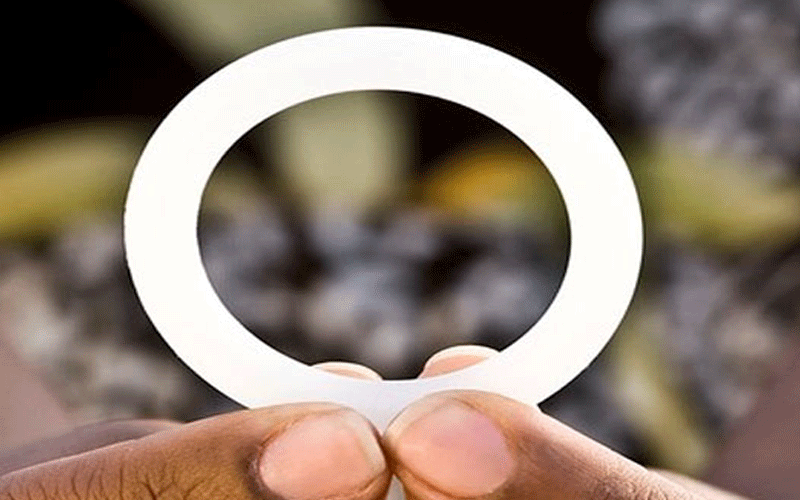Novel vaginal ring empowers women in fight against virus

Evelyn Makena @evemake_g
A vaginal ring inserted after every 28 days has potential to reduce a woman’s risk of HIV infection, according to researchers.
The Dapivirine ring received a nod from the European Medicines Agency on its effectiveness as a measure to reduce the risk of contracting HIV during vaginal sex for women in July this year. The WHO has approved it for prequalification.
The ring made of silicon is loaded with antiretroviral drug Dapivirine, which is released into the body slowly over a period of a month to reduce the risk of HIV infection. The ring is easy to use and place and cannot be felt by a sexual partner.
Dr Nelly Mugo, Chief Research Officer and Head, Sexual, Reproductive, and Adolescent Child Health Research Program (SRACH-RP) at the Kenya Medical Research Institute (Kemri) says the ring is a breakthrough innovation that will protect women from HIV.
“The product is safe to use since only mild doses are released into the bloodstream lowering the risk of developing resistance.
When inserted the ring releases the drug directly to the site of potential infection,” she says.
The HIV prevention method for women who have tested negative, is safe to use during sex and menstruation. Women can insert and replace the ring themselves each month.
The ring has undergone multiple trials up-to phase three to test its efficacy and safety with the largest involving 4,500 women from Zimbabwe, Uganda and South Africa.
Developed by International Partnership for Microbicides, the ring has been found to reduce the risk of HIV by 30 per cent with higher levels of protection seen among women who used it frequently.
Rosemary Mburu, Executive Director, WACI Health, noted the female initiated option for HIV prevention was a step in the right direction considering women in many parts of the world are disproportionately affected by HIV.
“Unlike other HIV prevention methods like use of condoms, this female controlled innovation gives full control to women to look after their safety,” she says.
Biological and social factors contribute to high rates of infections among women. “The high number of infections among women does not mean they have more risky sexual behaviors compared to men.
The female anatomy makes women vulnerable in that if semen is deposited it stays there for some time increasing the risk of infection,” says Nelly.
That coupled with poverty and cultural practices that hinder women from negotiating for safe sex have put more women are a risk of HIV infection.
“For most adolescent girls and young women the availability of the ring widens the pool of the preventative options to choose from. Young women are diverse and have varied preferences.
The ring will improve the uptake and access of HIV prevention products,” says Joyce Ouma, a 24-year-old youth advocate.
The vaginal ring is a complimentary prevention method in addition to other safe sex practices especially when women cannot access or use Prep.
It does not prevent infection from other sexually transmitted diseases or from pregnancy.
The innovation awaits prequalification by the WHO and regulatory approvals from countries in a process estimated to take up-to one year.









